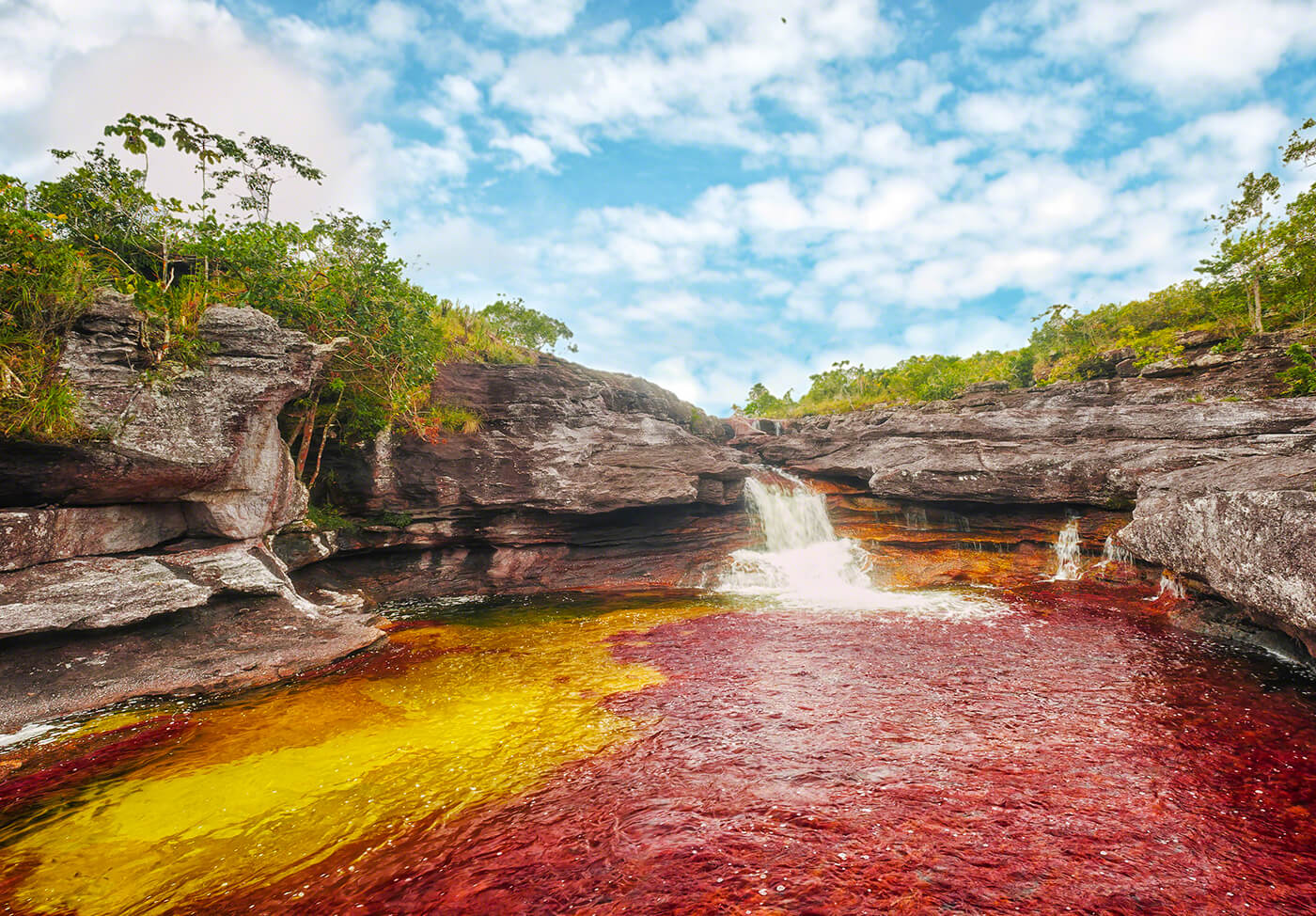Now Reading: The Colombian River That Flows in Five Colors
-
01
The Colombian River That Flows in Five Colors
The Colombian River That Flows in Five Colors

In Colombia’s remote plains lies a river that looks like it has been painted with nature’s own brush. Known for its dazzling hues, the waterway shifts between red, yellow, green, blue, and black depending on the season. This striking display is caused not by dyes or minerals but by a rare aquatic plant that blooms vividly when sunlight and water conditions align, turning the river into a living rainbow.
The river’s colors change most dramatically between the rainy and dry seasons. When the water level is just right, enough sunlight reaches the plants on the riverbed, bringing out brilliant shades of red and green. Yellow tones emerge from sand and rocks, while blue and black come from shadows and reflections. The blend of these elements transforms the river into a natural wonder that draws curious travelers and researchers alike.
Though far from India, this phenomenon resonates with readers who are fascinated by how landscapes reveal hidden beauty. Just as the salt lakes in Gujarat shift colors with the sky, or as the Loktak Lake in Manipur changes its face with floating phumdis, the Colombian river shows how delicate ecological balance can create breathtaking scenes. It highlights how local environments, when preserved, can surprise the world with wonders beyond imagination.
The five-colored river is more than a spectacle—it is a reminder of the intricate connection between water, sunlight, and life. For those who see it, the sight lingers as proof that nature, without any human intervention, still knows how to create its most vivid masterpieces.

























